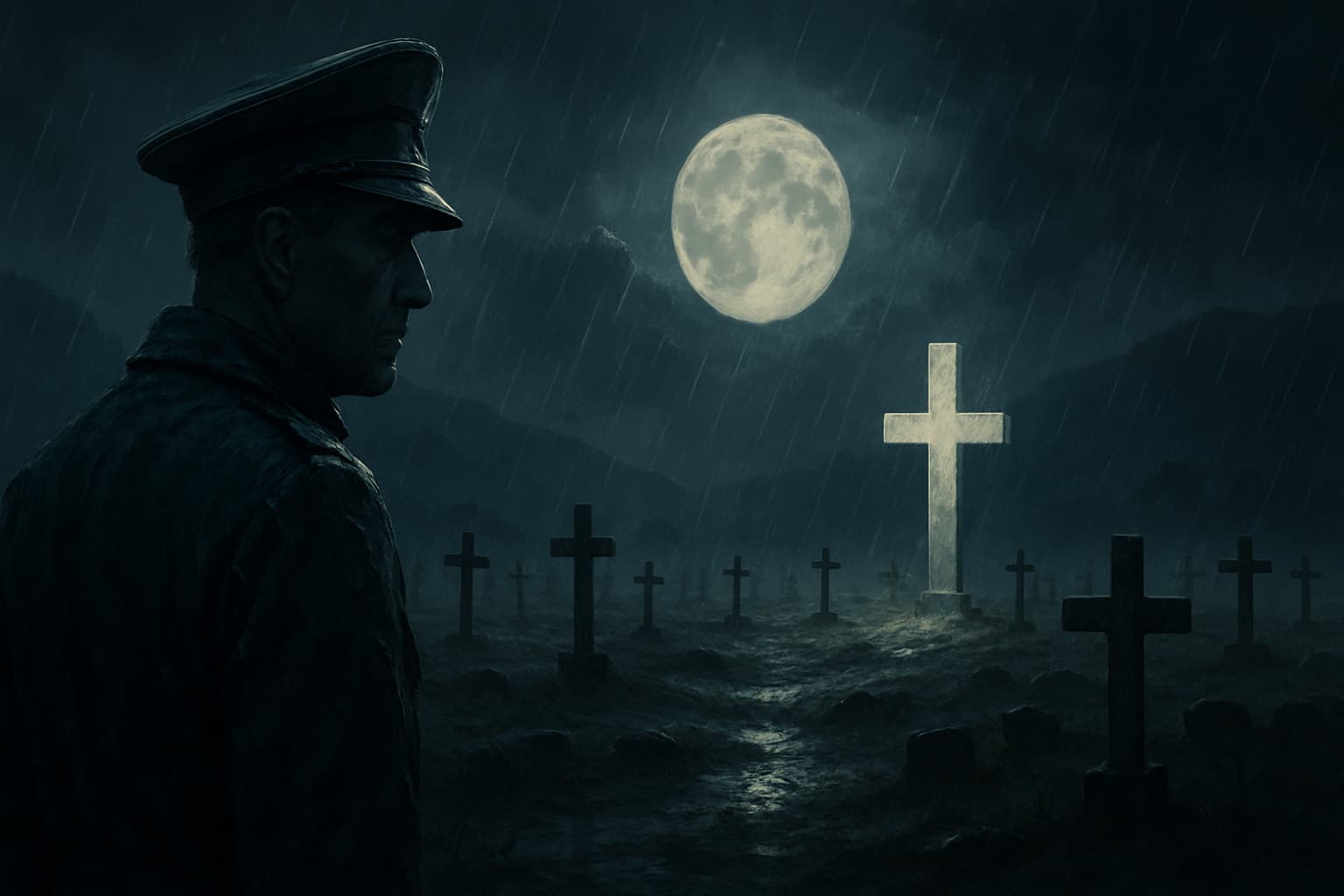
In The General of the Dead Army, Kadare proves himself a true master of atmosphere and cinematic detail. His writing style creates a vivid sense of place and an emotional connection to the characters. Here are some elements that draw me personally to Kadare’s literature:
Kadare often uses the weather to build atmosphere and reflect the inner world of his characters. The constant rain, snow, and fog create a heavy, melancholic feeling that runs throughout the novel. The final sentence of the book, The wind continued to blow, without respite, closes the story with that same bleak tone.
Kadare pays incredible attention to small details that create vivid, almost poetic images. For example, the description of the moon pouring its light through the sponge-like layers of clouds... paints a haunting picture of the night.
“The moon, having given up its vain attempts to break through, was pouring its brightness down into the spongy layers of cloud and mist, which now seemed to have become saturated with its pale light and were slowly, gently, evenly letting it drift down onto the horizon and the vast open plain. The sky above them had acquired a fecund glow, and the horizon, the plain, the road, all seemed to be covered with pools of milky light.”
Likewise, the detail of “the television screen that never works” describing the priest’s eyes is a sharp comparison that gives us a clear sense of emptiness and lifelessness in his expression.
“At that moment the general saw the colour of those eyes as somehow the same as the television screen at the other end of the lounge. The colour of a television that never lights up! the general said to himself. Or rather of a television screen perpetually showing the same utterly incomprehensible programme.”
The Contrast Between Life and Death The whole novel plays with the contrast between life and death. The general, who has come to collect the bones of the dead, constantly finds himself surrounded by scenes of life—weddings, dances, and the daily rituals of Albanian villagers. This contrast stands out especially in the wedding scene, where the general watches life pulsing around him while he himself is lost in thoughts of death.
Kadare uses the repetition of certain images and details to create a sense of coherence and to highlight key themes. For example, the image of the girl in the blue coat waiting for her fiancé at the stadium is repeated several times, becoming a symbol of life, youth, and love—things the general feels disconnected from.
Kadare builds an atmosphere where the boundaries between reality and dream, between past and present, become unclear. This is especially visible in the general’s memories and thoughts, which often feel like dreams or hallucinations.
Through small details—like the old men with large mustaches smoking pipes, the brides dressed in white, the traditional dances—Kadare paints a vivid portrait of Albanian society, presenting it as something mysterious and difficult to understand for outsiders. Albania in the novel appears as a mysterious land, with tall mountains and ancient customs. This portrait is not just picturesque—it’s Kadare’s way of showing how incomprehensible this country remains to foreigners. Every attempt by the general to understand the place and its people fails, highlighting the gap between the occupier and the occupied.
Kadare’s comparisons and metaphors are unusual and striking. For example, the comparison of blood feuds to a “raging bull” adorned with “decorations around its neck” is an image that helps you better grasp the paradoxical nature of this tradition.
“Their vendetta is like a play composed in accordance with all the laws of tragedy, with a prologue, continually growing dramatic tension, and an epilogue that inevitably entails a death. The vendetta could be likened to a raging bull let loose in the hills and laying waste everything in its path. And yet they have hung around the beast’s neck a quantity of ornaments and decorations that correspond to their conception of beauty, so that when the beast is loosed, and even while it is spreading death on every side, they can derive aesthetic satisfactions from those events at the same time.”
Kadare’s style in this novel is a brilliant example of the “show, don’t tell” principle in literature. Instead of directly telling us what the characters feel or what the novel means, he creates a series of images, details, and atmospheres that allow us to feel the message ourselves. This reminds me of some of Raymond Carver’s short stories.
This creates a multi-layered reading experience, where every detail can carry multiple meanings and where the overall atmosphere becomes just as important as the plot itself. It’s exactly this cinematic quality in Kadare’s writing that makes it so captivating and memorable for me. While these qualities are very present in The General of the Dead Army, they reach their peak in Broken April, which remains my favorite work by Kadare.



